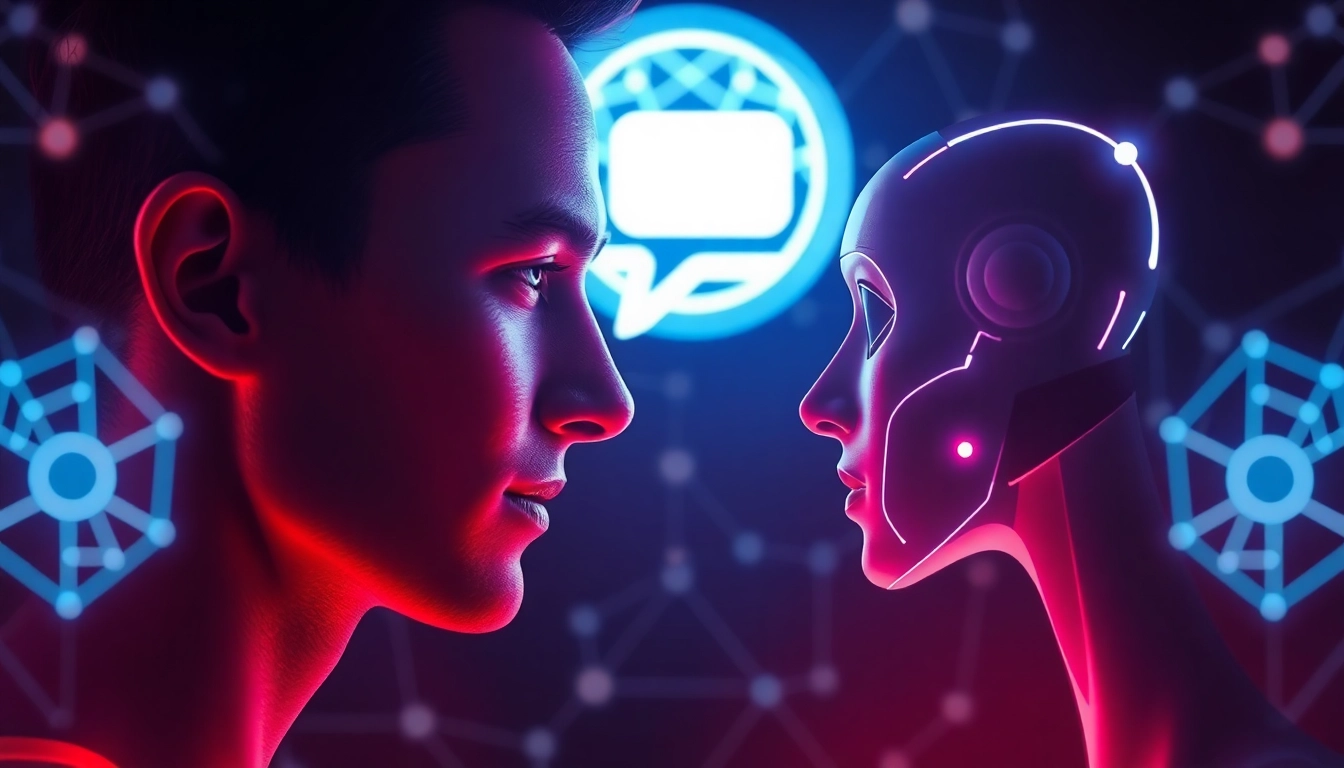Master the Human or Not Challenge: Sharpen Your Skills in AI Discrimination

Understanding the Human or Not Game and Its Objective
What is the Human or Not AI Social Turing Game?
The human or not AI game is an innovative social experiment rooted in the famous Turing Test concept. Its core premise is deceptively simple: participants engage in a brief, real-time chat—typically two minutes—with an anonymous conversational partner. The twist? That partner could either be a human or an artificial intelligence—most often an advanced language model like GPT-4 or similar AI systems. The game challenges players to discern with a high degree of accuracy who̦—or what—they’re speaking to. Unlike classical Turing Tests, which were primarily used to evaluate AI’s intelligence, Human or Not aims to inject a social dimension, emphasizing perception, intuition, and analytical skills in a digital environment. It transforms a complex question—”Can you tell who is human or AI?”—into an interactive, engaging game accessible to everyone regardless of technical background.
This game is more than just entertainment; it’s a reflection of how intertwined human and machine communication has become. As AI systems grow more sophisticated, distinguishing human from AI becomes increasingly challenging, making this game not merely fun but a valuable tool for understanding AI capabilities and limitations.
How Does the Game Encourage Critical Thinking and Intuition?
Playing the human or not game inherently demands the use of critical thinking and intuitive judgment. Participants must listen carefully to responses, scrutinize word choices, nuances, and emotional cues, and rely on their ability to recognize patterns characteristic of human or machine-generated text. Critical thinking is essential for analyzing responses, especially when AI responses mirror human conversational behaviors convincingly.
For example, subtle cues such as overly formal language, unnatural continuities, or responses that lack emotional depth often signal AI. Conversely, human responses might contain idiosyncratic expressions, minor grammatical inconsistencies, or personal anecdotes that AI might struggle to replicate convincingly. The game hones these perceptual cues, sharpening your ability to analyze language in real time.
Engagement in the game fosters heightened awareness of the nuances of human communication and the evolving landscape of AI-driven dialogue. Over time, players develop a heightened intuition, allowing them to rapidly spot signs of non-human responses, which has practical applications beyond gameplay—such as evaluating online content authenticity or identifying bot activity.
Key Differences Between Human and AI Responses
Understanding the fundamental distinctions between human and AI responses is essential for excelling in this game. A few key points include:
- Consistency and Patterning: AI often exhibits highly consistent language patterns or verbose elaborations that may seem unnatural or overly formal compared to human spontaneity.
- Emotional and Contextual Nuance: Humans tend to include emotional cues, humor, irony, or personal stories that are context-dependent, whereas AI might produce responses that, despite being coherent, lack genuine emotional depth or context awareness.
- Response Speed and Variability: AI systems can generate responses at near-instantaneous speeds with remarkable consistency, while humans may pause, deliberate, or exhibit minor hesitations.
- Handling Complex or Ambiguous Queries: Humans excel at navigating ambiguity, humor, or sarcasm, often injecting personality and spontaneity, which AI may find challenging to emulate authentically.
Recognizing these distinctions requires conscious effort and sharp perceptual skills, especially as AI continues to close the gap in natural language generation.
How to Play Human or Not Effectively
Step-by-Step Guide to Getting Started
Getting started with human or not is straightforward, but mastering the game involves strategic preparation and attention to detail. Here’s a step-by-step approach:
- Visit the Platform: Access the game via human or not, ensuring you’re on the official site for a secure and smooth experience.
- Start a New Conversation: Initiate a chat and be prepared for a two-minute interaction with your partner—either a human or AI.
- Engage Meaningfully: Ask open-ended, probing questions that can reveal personality, emotional range, or spontaneous insights.
- Observe Response Patterns: Pay attention to language style, response speed, emotional depth, humor, and any inconsistencies or overly generic replies.
- Make Your Guess: After the chat, indicate whether you believe your partner is human or AI.
- Learn and Adapt: Review your outcomes over multiple rounds; notice recurring cues that helped or hindered your judgments.
Tips for Spotting Subtle Cues in Responses
To improve your success rate, you should develop a keen eye for subtle cues:
- Emotional Authenticity: Humans often display genuine emotion, humor, or personal anecdotes that AI responses may lack or handle awkwardly.
- Language Variability: Natural conversations are unpredictable. Watch for responses that are overly formal or excessively consistent, which can be a sign of AI.
- Contextual Awareness: Test responses with follow-up questions that depend on previous context; AI might produce responses that don’t adequately reference earlier parts of the conversation.
- Response Timing: Rapid, mechanically perfect replies could suggest AI, especially if responses are delivered almost instantaneously with no natural hesitation.
- Handling Ambiguity and Humor: A human is more likely to understand and incorporate humor, irony, or nuanced interpretations, whereas AI may produce literal or awkward replies.
Practicing these cues enhances your ability to discriminate with confidence, especially as AI models improve in mimicking human language fluency.
Common Challenges and How to Overcome Them
Despite best efforts, several challenges may impede accurate estimation:
- AI Advancement: As models like GPT-4 develop, responses become more natural and convincing, complicating detection.
- Conversation Depth: Brief interactions might not reveal sufficient cues. To counter this, craft questions that probe emotional intelligence, personality, or humor.
- Response Strategy: Some AI bots are programmed to mimic human quirks, making them harder to identify. Vary your question style and be attentive to inconsistency or overly perfect responses.
Overcoming these challenges requires continuous practice, curiosity, and updating your detection techniques as AI technology evolves. Participating regularly helps in tuning your perception and understanding AI’s limitations.
Why Participating in Human or Not Enhances Your AI Literacy
Understanding AI’s Capabilities and Limitations
The core value of engaging with the human or not game lies in deepening your understanding of AI systems. You see firsthand how sophisticated AI responses can be, highlighting their strengths such as rapid information processing, language fluency, and contextual understanding. Simultaneously, you observe persistent shortcomings—emotional comprehension, originality, or handling complex, ambiguous scenarios—thereby gaining a balanced perspective of AI’s true capabilities.
This experiential knowledge is vital for developing robust media literacy in an era dominated by AI-generated content, deepfakes, and automated communication. It prepares you to navigate digital environments more securely and critically.
Developing Better Media and Information Literacy
Beyond recognition skills, participating in the game fosters critical evaluation of online content. Recognizing AI’s signatures helps in identifying bot-driven misinformation, fake reviews, and automated trolling. This heightened awareness supports responsible media consumption and equips individuals to scrutinize sources effectively in social, political, and professional contexts.
Contributing to AI Ethics and Safety Discussions
Hands-on experience with AI-like responses fosters nuanced discussions around AI ethics, transparency, and responsible deployment. By understanding the subtleties of human-AI interaction, players can advocate for models and systems that prioritize safety, accountability, and human oversight, contributing to broader societal debates on AI governance and standards.
Technologies Powering Human or Not and Future Developments
What AI Technologies Are Used in the Game?
Human or Not utilizes state-of-the-art AI language models, often including variants of GPT-4, to simulate human-like interactions. The platform integrates cutting-edge natural language processing (NLP) technologies that enable bots to generate contextually relevant, coherent, and conversational responses. These models are trained on vast datasets spanning diverse topics, ensuring responses are engaging and adaptable.
The Role of GPT-4 and Other Leading AI Models
GPT-4, developed by OpenAI, is among the most advanced language models powering the responses in the game. Its ability to understand nuanced prompts, generate creative language, and imitate human conversational styles makes it an ideal choice for realism in gameplay. The platform may also incorporate supplementary AI systems or fine-tuned models designed to simulate different types of interlocutors, increasing variability and challenge for players.
Potential Enhancements and Innovations on the Horizon
Future iterations of human or not are poised to include richer interaction modalities, such as voice-based AI interactions, deeper emotional analysis, and adaptive difficulty levels based on player skill. Advances in multimodal AI—integrating text, speech, and visual cues—will further blur the lines, making discrimination even more complex and engaging. Additionally, integrating real-time feedback and personalized learning algorithms can help players develop their detection skills more effectively.
Joining the Community and Sharing Your Insights
Engage with Other Players and Experts
Participating in Human or Not opens doors to vibrant online communities on platforms like Reddit, social media, and dedicated forums. Sharing strategies, success stories, and questions fosters collective learning and broadens understanding of AI interactions.
Share Tips and Success Stories on Social Media
Document your experiences, breakthroughs, and interesting encounters by posting on social media with the hashtag #humanornot. This engagement encourages others to refine their skills and contributes to public awareness of AI’s rapidly evolving landscape.
Participate in Ongoing Discussions About AI and Humanity
By exchanging insights—whether through online discussions, webinars, or conferences—you help shape societal perspectives on AI ethics, transparency, and future development. Your firsthand experience supports broader conversations about the role of AI in our lives and the importance of human discernment.


